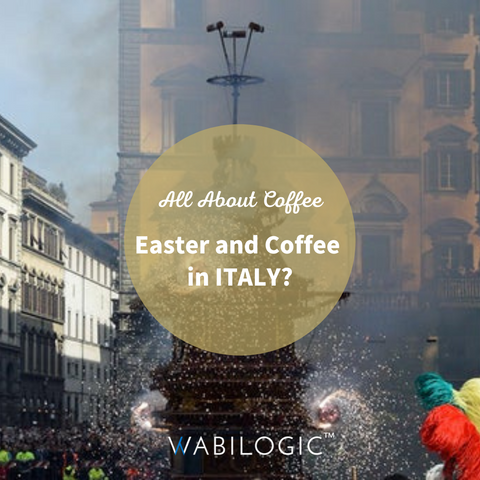
Locals celebrate a 350-year-old Easter tradition called Scoppio del Carro, or "explosion of the cart" to commemorate the time of the first crusade. On Easter Sunday a mechanical dove hits a cart in front of Duomo of Florence and thus lights the fireworks contained on the cart. An ornate cart packed with fireworks is led through the streets of the city by people. The Archbishop of Florence lights a fuse and the cart sparks a lively fireworks display. The custom dates back to the First Crusade and means to secure a good harvest.
In Lombardy, the Colomba is the most famous dessert, a dove-shaped bread made with almonds, sugar, and egg whites. The Colomba originated in Milan and can now be discovered all over the world, but it's still very popular in northern Italy. Another traditional northern Italian food is Pinza Pasquale from Trieste, a loaf of sweet bread with a cross carved in the top.
When it comes to coffee, we usually think of Italy as the land of cappuccinos and espressos, but there is much more to the long, varied, and storied history.
The first historical record of coffee in Italy comes from Venice in 1638, when a young barista named Pasqua Rosée arrived from Aleppo in Syria and began working as a servant for the Confalonieri family. Rosée quickly became famous and opened her own café called 'The Sultan's Kitchen'. Her knowledge of creating tasty coffees earned her the nickname 'the mother of all baristas'.
By 1765, almost every major city in Italy had a coffeehouse or two, with Turin opening 300 cafés during this time. The popularity of coffeehouses spread throughout Italy rapidly and soon they were no longer just places for businessmen and students to meet but also became popular meeting places for men and women of all ages.
Coffee is everywhere in Italy now, but back in 1902, the city of Milan passed a law that prohibited working women from drinking coffee. The legal reason was that coffee provoked women's "animal instincts" making them unfit for work.
Italy is the motherland of espresso, cappuccino, and latte. If you are planning a trip to Italy and want to experience a delicious cup of coffee, here are some tips for ordering coffee in Italy.
Espresso: Italian word for pressure is "pressione". Actually, espresso refers to coffee made by forcing steam through finely-ground coffee beans. An espresso is usually about one ounce and is served in a small cup called a demitasse. You will find it at any local bar or cafe in Italy. There are lots of variants of espresso, which are mixed with milk or sugar before drinking.
Cappuccino: it's a mix of espresso and hot milk, topped up with a lot of foam. The cappuccino was born in Milan at the beginning of 80s and originally it was served with only one layer of foam. if you want now a more creamy foam, ask for it. This is an Italian specialty, but you can also find it in other places all over the world.
Latte: This drink originated in Naples, Italy and has spread throughout the world. It is very different from American Lattes because they use much more milk than foam. It has a rich dark brown color like cocoa powder and smells faintly of chocolate. Being made with a precise 1:2 ratio of espresso and hot steamed milk, the foam is thick and creamy, and it looks like whipped cream.
Source: selectitaly.com, ellci.net
Wabilogic™ is the official licensee of Melitta®'s products. For the last 50 years, we embrace breakthrough concepts for products with timeless design. Don't miss the chance to explore exceptional coffee makers. (Click Here)
